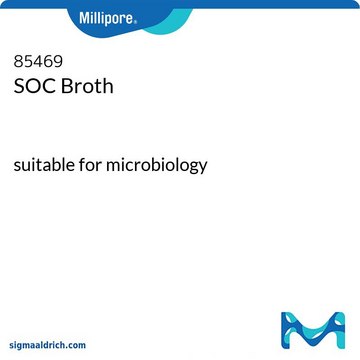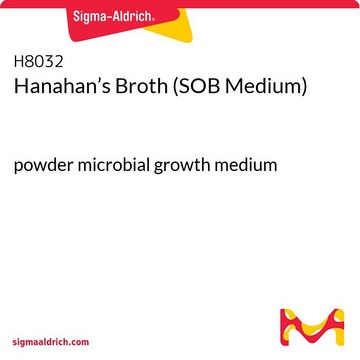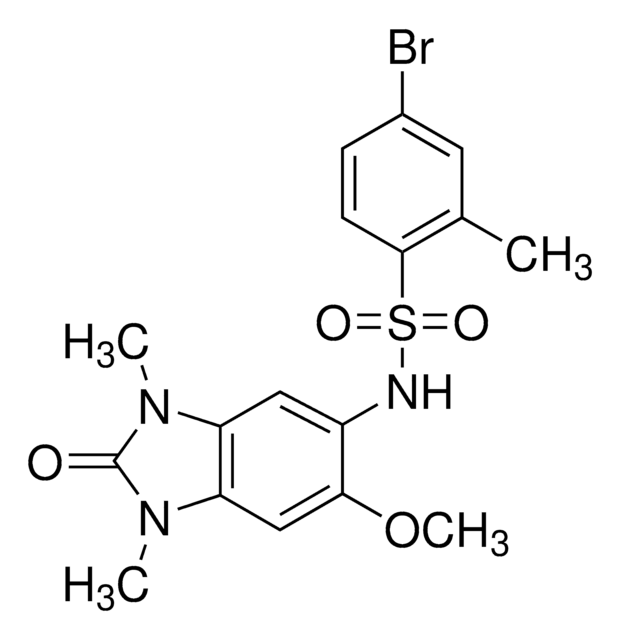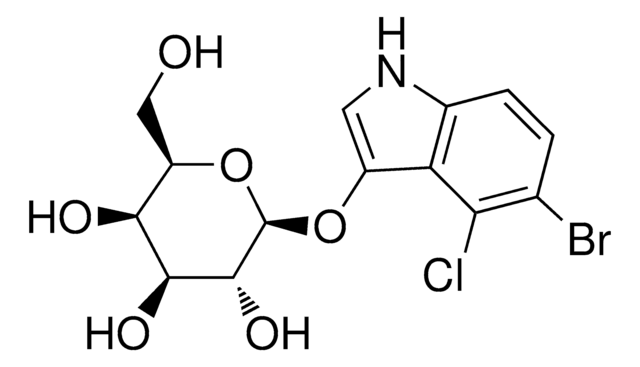Key Documents
S1797
SOC Medium
For use in transformation
Synonim(y):
Super Optimal broth
About This Item
Polecane produkty
klasa czystości
for molecular biology
Poziom jakości
sterylność
0.2 μm filtered
Postać
liquid
skład
Dextrose, 3.603 g/L
KCl, 0.186 g/L
MgSO4, 4.8 g/L
Tryptone, 20 g/L
Yeast extract, 5 g/L
metody
microbiological culture: suitable
Zastosowanie
agriculture
temp. przechowywania
2-8°C
przydatność
nonselective for Escherichia coli
nonselective for coliforms
Opis ogólny
Zastosowanie
Cechy i korzyści
- Filter-sterilized, ready-to-use format
- Convenient package sizes
- Standard formulation
produkt powiązany
Kod klasy składowania
12 - Non Combustible Liquids
Klasa zagrożenia wodnego (WGK)
WGK 1
Temperatura zapłonu (°F)
Not applicable
Temperatura zapłonu (°C)
Not applicable
Certyfikaty analizy (CoA)
Poszukaj Certyfikaty analizy (CoA), wpisując numer partii/serii produktów. Numery serii i partii można znaleźć na etykiecie produktu po słowach „seria” lub „partia”.
Masz już ten produkt?
Dokumenty związane z niedawno zakupionymi produktami zostały zamieszczone w Bibliotece dokumentów.
Klienci oglądali również te produkty
Produkty
General protocols for growth of competent cells and their transformation (uptake of DNA).
Ogólne protokoły wzrostu komórek kompetentnych i ich transformacji (pobieranie DNA).
Protokoły
Technical Article on competent cells. Transformation is a process by which some bacteria take up foreign genetic material (naked DNA) from the environment.
Artykuł techniczny na temat komórek kompetentnych. Transformacja to proces, w którym niektóre bakterie pobierają obcy materiał genetyczny (nagie DNA) ze środowiska.
Hodowla bakterii E. coli w skali od małych kultur do fermentacji. Uwzględniono protokoły inicjowania kultury starterowej, komórek zawiesinowych, monokultury i posiewu bakteriofaga M13.
General protocols for growth of competent cells in microbial medium.
Nasz zespół naukowców ma doświadczenie we wszystkich obszarach badań, w tym w naukach przyrodniczych, materiałoznawstwie, syntezie chemicznej, chromatografii, analityce i wielu innych dziedzinach.
Skontaktuj się z zespołem ds. pomocy technicznej











